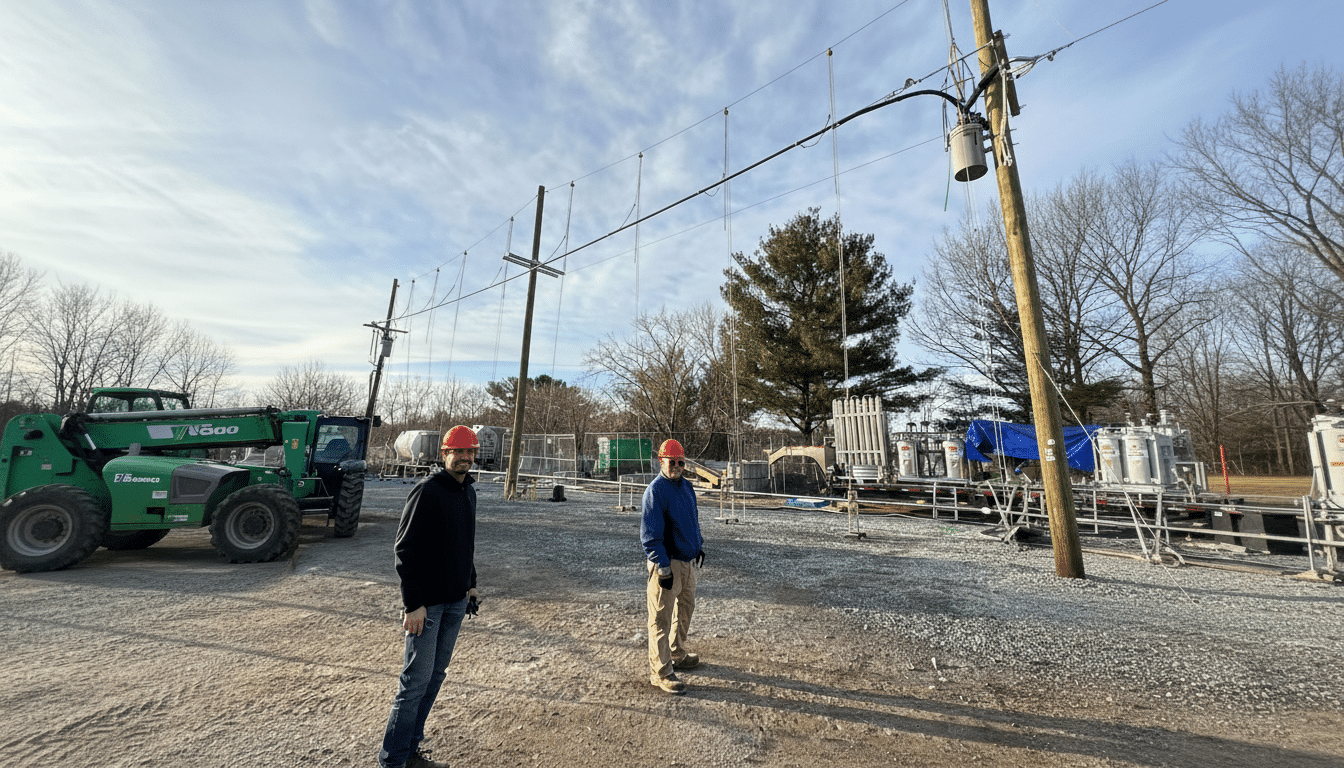Microsoft-backed startup VEIR is bringing superconducting power delivery to the grid, and then to the server hall. The company announced a low-voltage, megawatt-class cable system for data centers capable of supporting 3 MW per run. After constructing a full-scale simulated data hall near its Massachusetts headquarters, VEIR aims to test the system with operators next year ahead of a targeted commercial launch in 2027.
The wager is this: racks of the AI era are outstripping copper.

Superconducting cables can carry tremendous current with virtually zero resistive loss, orders of magnitude less heat, and an order of magnitude smaller space—precisely where the industry is already at a dead end.
Why Data Centers Need a New Type of Power Plumbing
Rack power densities that used to hover in the teens have surged. According to the Uptime Institute, the percentage of racks with a capacity over 20 kW is increasing quickly, and liquid-cooled AI training clusters are already targeted to average around 100–200 kW per rack, with pilots stretching higher. At those levels, conventional low-voltage copper feeders and busways are also oversized, hot, and difficult to route—costing precious aisle space that operators would prefer to use for IT.
The macro trend is no kinder. The International Energy Agency has estimated that global data center electricity consumption could reach nearly 1,000 TWh by the mid-2020s—up sharply from earlier in the decade, with AI workloads as a primary driver. Interconnection queues and campus-level distribution constraints, however, are imposing an operational reality in which operators will make on-site power more of a workhorse.
How VEIR's Superconducting System Functions
VEIR employs high-temperature superconductors, which have no resistance to electrical current when cooled with liquid nitrogen, for the low-voltage conditions of data centers. The conductors, obtained from reputable suppliers, are inserted in a flexible cryogenic sheath carrying liquid nitrogen at about −196°C (−321°F). Termination boxes at both ends of the cable handle the transition from superconducting runs to standard copper in power distribution units.
According to the company, a superconducting run can replace multiple large copper feeders and decrease the cross-sectional space requirement by up to 20x, and enable power distribution over distances as much as 5x longer at low voltage without unacceptable voltage drops. Since the superconductor itself has little I²R loss, most of the efficiency penalty occurs in the nitrogen cooling loop; VEIR claims that with modern cryogenics it is possible to keep that overhead small compared to carrying extra copper.
Liquid nitrogen is abundant and cheaper than the helium used in older superconducting systems, and is already widely used in industry. For mission-critical applications, the system can include double pumps, monitored venting, and oxygen-deficiency protection to satisfy safety as well as uptime needs.
Pilot timelines and customers for VEIR's system
VEIR has run a simulated data hall to verify installation, terminations, and maintenance practices. The company says it will begin pilots in production data centers next year and is aiming for a commercial rollout by 2027. Microsoft’s support suggests hyperscalers’ enthusiasm, as operators face the challenge of not only lining up more megawatts from the grid, but transporting that power efficiently between a substation and the rack.

The turn away from long-distance transmission—where utilities have typically been slow to embrace new technology—toward data centers reflects the arc of the near-term pain. Campus and in-building distribution are now a gating factor, specifically for AI clusters requiring dense low-voltage power without expanding the facility footprint, operators informed the company.
Competitive landscape and risks for superconducting power
VEIR will compete against several routes to higher density: bringing medium-voltage distribution closer to the row; deploying direct current (versus alternating current) backbones in the data center; increasing use of liquid cooling to reduce thermal losses; and reimagining power electronics with wide-bandgap devices.
Superconductors provide a different lever—enormous streams of current in tight quarters—but would need to show that they could win on cost, reliability, and meeting code at scale.
Field precedents exist. High-temperature superconducting cables have operated on urban grids, such as those in Essen with Nexans and Long Island with AMSC and the local utility, demonstrating multiyear reliability. But being able to apply those lessons to Tier III and IV data centers will depend on UL/NRTL certifications, NEC adherence, maintenance playbooks, and safety systems for handling nitrogen. Economics will be under the microscope as well, particularly with copper pricing dipping and operators considering capex versus operating efficiency and reclaimed white space.
What to watch as VEIR pilots superconducting power cables
Key metrics in the pilots will be the energy overhead of the cryogenic loop; any measurable improvement to facility PUE; effective reduction in copper infrastructure; and how much white space operators recover for compute.
Should be cool (literally): 3 MW superconducting feeders to rows of 100–200 kW racks with simpler routing and much lower heat are potentially a utility knife for AI halls.
In the longer term, success inside the data hall could pave connections to campus applications—connecting substations, on-site generation, and battery resources with short-run, low-loss runs. For the moment, the proposition is simple: make today’s megawatts travel farther, fit better, and run cooler where it counts.

